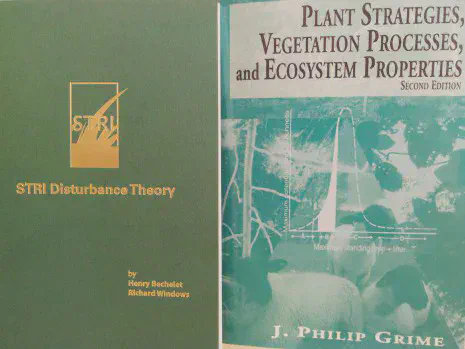Rhubarb, custard, and the little green book
I’m planning to do a better job of coming up with good titles for articles and presentations. The modern master of titles may be Henry Bechelet, who wrote an article about aeration entitled “Rhubarb and Custard.” That sure beats “Aeration” as a title, doesn’t it?
You’ll find the Rhubarb and Custard article in the little green book, the 80-page STRI Disturbance Theory by Bechelet and Windows. I brought a copy of the book on a recent trip and enjoyed re-reading it.

The first chapter is a reprint of Changing the nature of your greens. Bechelet begins the article describing just what the disturbance theory is:
“The objective of this article is to give a greater understanding of the survival strategies developed by the individual turfgrass species. I mean to get you thinking about your greens differently.
This article is adapted from the work of Grime, Hodgson, and Hunt in their study: ‘Comparative Plant Ecology - A functional approach to common British species’ (1988). This work states that the vegetation that develops in a place at a particular time is governed by environmental pressures. These pressures may be categorised as stress, disturbance, and competition and they can vary in their relative intensities.”
The third chapter is a reprint of Food For Thought. This is a common sense approach to turf nutrition. Bechelet writes:
“We want to minimise fertiliser inputs to reduce the need for incessant aggressive treatments [disturbance]. Minimal (some would say ‘optimal’) means producing just enough growth for the surface to be prepared and be able to withstand play without deteriorating. The desired level of growth will vary depending on what we need to achieve at different times of the year … In terms of nitrogen input, for soil-based greens the Danish experience finds 5 – 7 g/m2 N per annum to be sufficient. You should aim to apply as little as necessary so you don’t have to verticut too often.”
Just to check how the growth potential model would relate to the “Danish experience,” I calculated the temperature-based growth potential for Copenhagen, using normal temperature data, and for fine fescue I would use a maximum monthly N of 2 g/m2. The growth potential model predicts 6.5 g annual N for Copenhagen. Right in the range suggested by Bechelet.
For more about growth potential, listen to Frank Rossi and I talk about it on TurfNet RADIO.